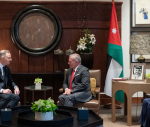You are here
The conceptual roots of the Global South’s debt crisis
May 21,2024 - Last updated at May 21,2024
DAKAR — The widening debt crisis in the Global South largely emanates from a flawed multilateral system. But it also reflects the inadequacies of the dominant analytical and policy frameworks, specifically, their assumptions about the nature of money, the economic possibilities available to currency-issuing governments, and the underlying causes of developing countries’ external indebtedness.
Viewed through the lens of Modern Monetary Theory (MMT), the limitations of mainstream economic thinking as applied to sovereign-debt crises become even clearer. The basic idea behind MMT is that, unlike households or private firms, governments that control their own fiat currency cannot default (assuming their debt is denominated in their own currency). As they are not money-constrained, they can spend to achieve their goals. Their main constraint is the availability of productive capacity, which determines the risk of inflation.
MMT explains why the most indebted countries, in absolute and relative terms, are not in distress. Consider that Japan’s sovereign debt-to-GDP ratio was 254 per cent last year, while the ratio was 144 per cent in the United States, 113 per cent in Canada and 104 per cent in the United Kingdom. Yet none of these countries is experiencing a sovereign-debt crisis. By contrast, in 2020, Argentina, Ecuador and Zambia had much lower debt-to-GDP ratios when they defaulted on their external obligations.
The main difference is that Japan, the US, Canada, and the UK are monetarily sovereign: Their public debt is denominated in their national currency, while their central banks maintain some control over the interest rates applied to that debt. Most governments in the Global South are at risk of insolvency because they borrowed in foreign currencies.
MMT implies that if rich countries desired to provide significant debt relief to the Global South, the main challenges would be coordination, between different creditors and debtors, as well as other relevant actors, and accountability, not affordability. Given that these countries cannot run out of their own currency, there are no financial constraints on canceling in whole or in part the public and publicly guaranteed external debt stock of 131 lower- and middle-income countries (excluding China, Russia, and India). This debt stood at $2.6 trillion in 2022, an amount less than Germany’s public debt.
Why do Global South countries that are currently in or at risk of debt distress borrow in foreign currencies in the first place? Economists’ usual answer is that these countries would otherwise lack “money” and “savings”. Such a view is based on an erroneous understanding of the nature of money. Currency-issuing governments cannot run out of their own money. Moreover, as the Bank of England has shown, banks are not intermediaries between savers and loan applicants; instead, they create new purchasing power every time they extend a loan.
This leads to another important observation derived from MMT: As money is not scarce, anything that is technically and materially feasible at the national level can be financed in the national currency. Developing countries need not issue foreign-currency debt to finance projects that require locally available resources such as labour, land, raw materials, equipment and technologies.
When required resources are not locally available and can be purchased only with foreign currencies, developing countries might be forced to take on the burden of dollar-denominated debt. One could imagine resource-poor or climate-vulnerable countries making such a choice.
But this ignores the fact that Global South countries often earn substantial income from exports. The issue is that a significant proportion of this income is remitted back to foreign investors — many of whom benefit from an inequitable global tax architecture — as profits or dividends. This is on top of the fraudulent practices that result in illicit financial flows.
Between 2000 and 2018, for example, African countries suffered greater financial hardship from profit transfers by foreign investors, dividend repatriation by subsidiaries to their parent companies, and illicit financial flows than from servicing its external debt. They issued foreign-currency debt that paid high interest rates partly to plug the gap created by foreign nationals appropriating — both legally and illegally — vast dollar earnings.
Consider Zambia, a copper-producing country that lost around $10.6 billion in the form of illicit financial flows between 1970 and 1996 (355 per cent of its GDP in 1996), $8.8 billion between 2001 and 2010, and $12.5 billion between 2013 and 2015. Zambia’s public and publicly guaranteed external debt was $1.2 billion in 2010, rising to $12.5 billion by 2021.
If the Zambian government had better fiscal and technical control over its export sector, it would have accumulated sufficient dollar reserves to enhance food and energy self-sufficiency and to finance investment in infrastructure and other public goods requiring the import of foreign productive capacity. There would have been no need to take on so much foreign-currency debt. The same could be said for other resource-rich African countries.
In a just world, countries subject to asymmetric tax agreements and resource theft would be fairly compensated, rather than crushed by austerity policies. Barring that, external debt cancellation would help developing countries invest in climate resilience and improve the health and well-being of their populations. As many policymakers, economists and social movements have argued, it is an urgent necessity.
But even such a bold step would not be enough to address the root causes of recurring debt crises in the Global South. That would require stopping the financial bleeding caused by multinational corporations and promoting an economic development strategy that makes full use of the resources each country can command with its national currency.
Ndongo Samba Sylla, head of research and policy for the Africa region at International Development Economics Associates, is a former technical adviser for the presidency of the Republic of Senegal and a co-author of “Africa’s Last Colonial Currency: The CFA Franc Story” (Pluto Press, 2021) and a co-editor of Economic and Monetary Sovereignty in 21st Century Africa (Pluto Press, 2021). Copyright: Project Syndicate, 2024. www.project-syndicate.org













Add new comment